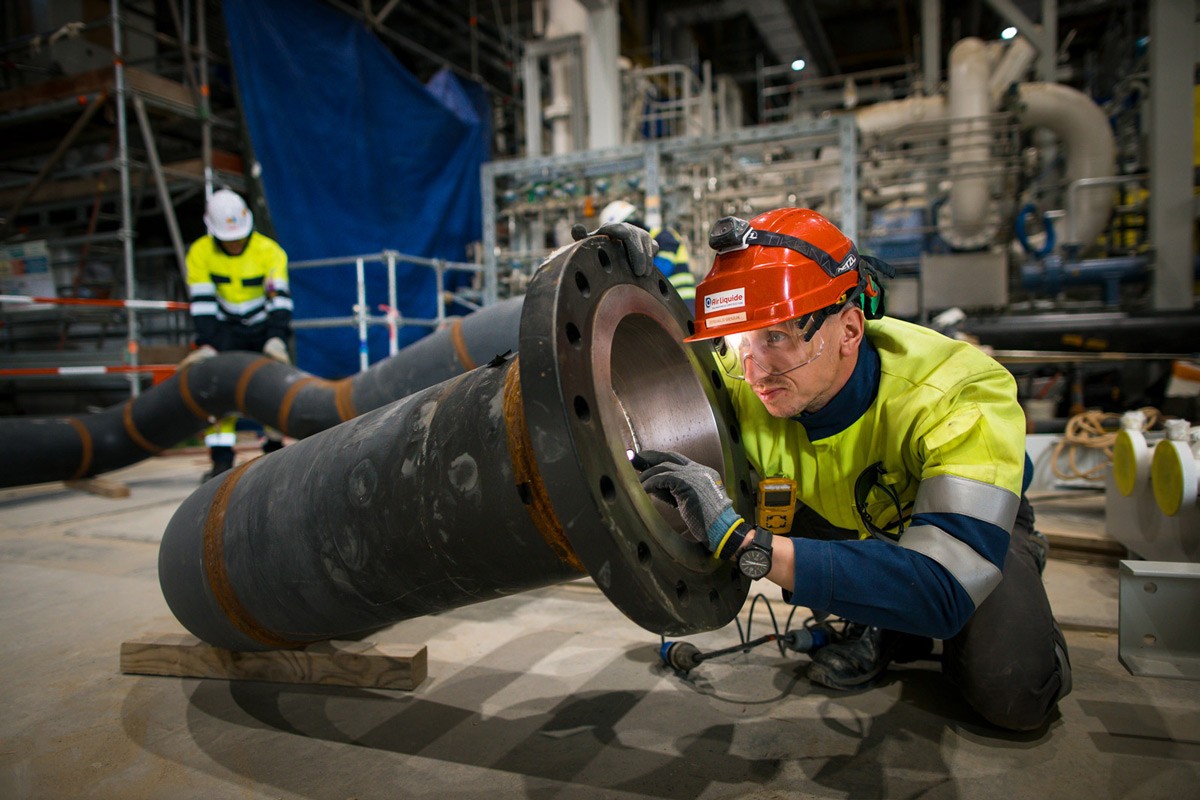Welding works in ITER Cryoplant nearly completed

Mykhailo Geniuk (Air Liquide mechanical supervisor) inspecting a pipe prior to installation, ITER Cryoplant. Works financed by F4E. Cadarache, November 2019. © F4E
An army of powerful heating systems will be deployed to achieve the super-hot plasma of the ITER device. However, in order to confine it, superconductive magnets will need to be cooled at -269 °C with the help of the ITER Cryoplant.
This massive refrigerator is, step by step, taking shape. More than 50 workers in Cadarache are about to complete all welding operations. It was back in October 2017 when it all started, with the preparation of the prefabricated piping spools. The second stage started in May 2018, on site, and at present, the 50 km of welding needed for this installation are almost finished.
The ITER Cryoplant is nearing completion. Four overlapping phases comprise all the work in this facility: the first one ended in October and involved the erection of equipment, which consists of the lifting of big tanks, large compressors and cold boxes containing either helium or nitrogen. The second phase, which is also about to finish, is related to the installation of the piping, its welding and testing. The third phase, which is nearly half way through its development, involves all the electrical and instrumentation works. Finally, the pre-commissioning phase, which is just beginning, deals with preparing and checking the actual commissioning of the cryoplant.
Once the cryoplant is finished, three helium refrigerators will work in parallel to provide supercritical helium (a stable fluid that can be as dense as a liquid) at 4.5 K (-269 °C) to the ITER superconducting magnets and to the cryopumps that will ensure high-quality vacuum in the cryostat and vacuum vessel. Gas helium at 80 K (-193 °C) will also be used in the cryostat, cryolines and cryopumps. This helium gas will be produced in the so-called 80 K loops, provided by F4E, in which liquid nitrogen at -196 °C is used to cool the original warm helium from 27 °C to -193 °C.

ITER Organization, F4E and ITER India are the parties responsible for the procurement of the cryoplant. In particular, Europe is in charge of the liquid nitrogen plant and auxiliary systems. For this scope, Europe has relied on Air Liquide, the main contractor in charge of the design, procurement, installation and testing of the different components. In addition, two of its subcontractors have dealt with the construction part: IREM, which has been responsible for the piping and the mechanical aspects of the project, including leak tests, and TCPI, responsible for the electrical and instrumentation tasks.
Marc Simon, F4E Deputy Project Leader for Cryogenics, concludes that “Reaching mechanical completion will be a great achievement for the dedicated team of professionals assembled to coordinate and supervise the work of Air Liquide since 2018. It has been very challenging and we have met issues we could not have anticipated. Thanks to the good collaboration with our contractors, these have now been overcome. With the Electrical and Instrumentation works well on track, we are on target to deliver this massive cryogenic plant ready to start commissioning in the first half of next year.”